This represents a half hatched nymph. A crippled and hopeless morsel for the Trout to take at will. The idea is to hang the fly in the surface film, with the tail end of the nymph shuck still attached and hanging in the water. The front end of the fly represents the half hatched winged insect, it’s looped body stuck in the top of the shuck, and its legs trailing beneath its thorax and partially opened wings.

The materials you will need:

Use a light-wire dry fly hook, like this # 18 Gamakatsu:
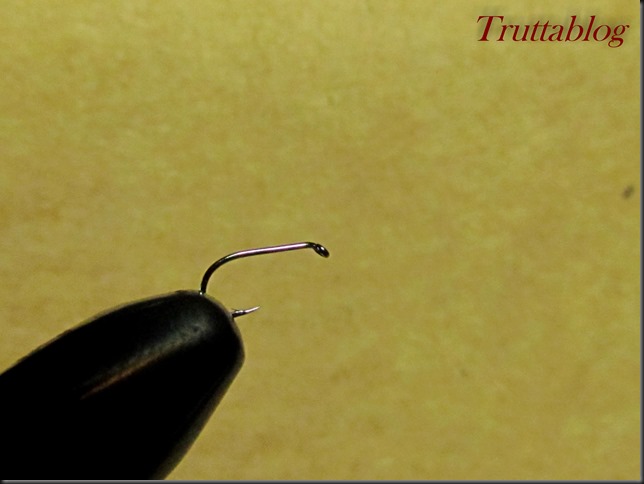
Start the thread, and wrap to well around the bend:
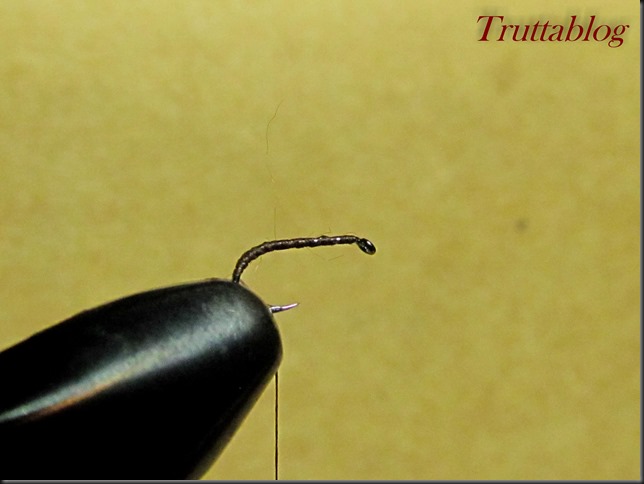
Move the hook in the vice to expose the tail area, and tie in 2 or 3 very short tails of pheasant tail fibre:
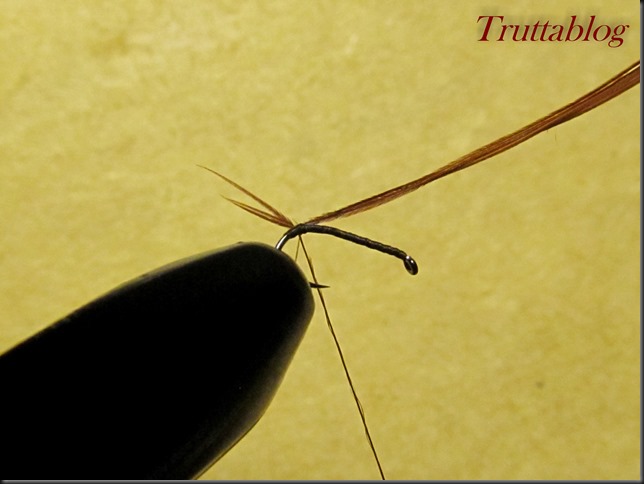
Now move the hook back to a horizontal position, obscuring the tail, and tie in the copper wire and vinyl rib:
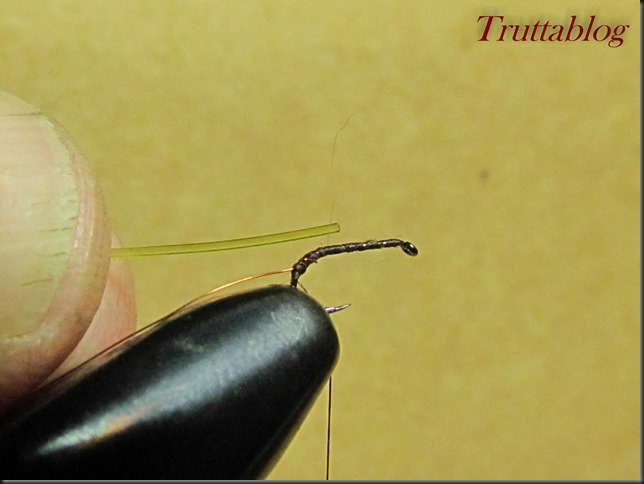
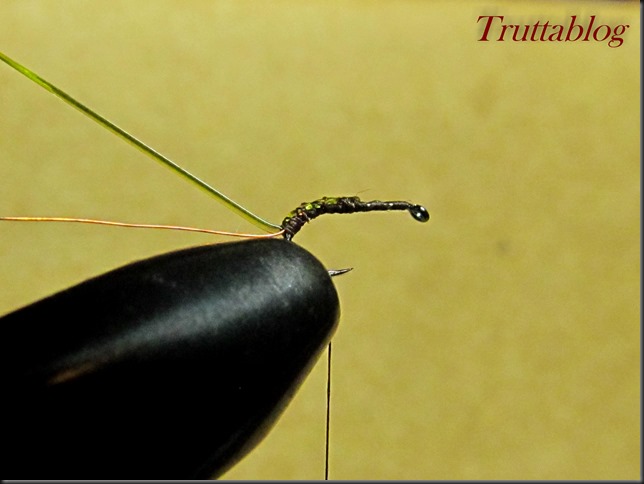
Wind about 5 wraps of copper at the base of the tail and tie off. Then take the silk forward, and wrap the vinyl:
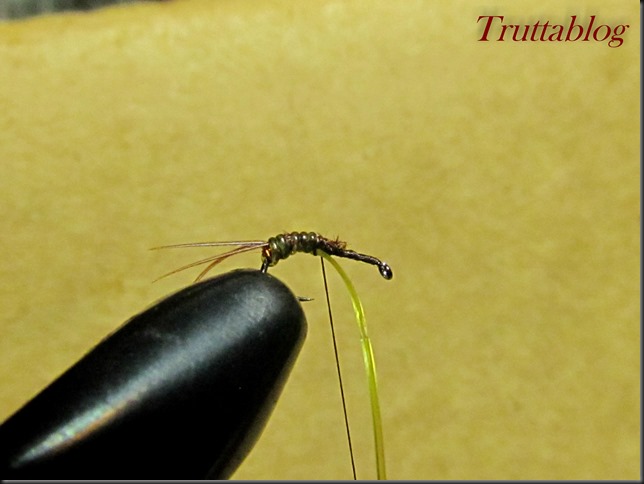
Now tie in a short length of body braid, and cut away the Vinyl rib:
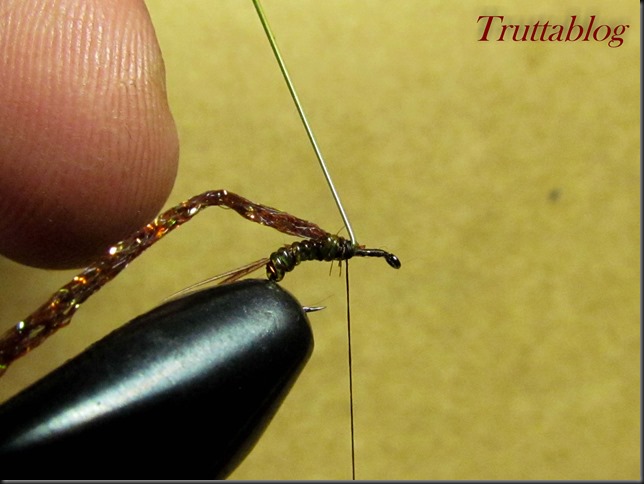
Loop the body braid as shown, and tie in:
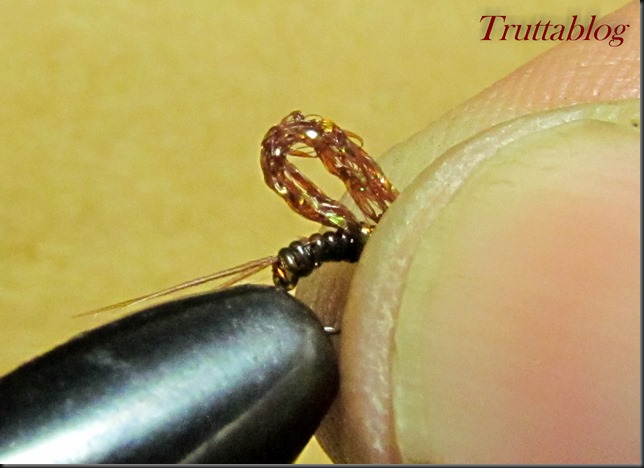
Now cut a tapered wing post and tie it in facing forward, before raising it up to the vertical position:
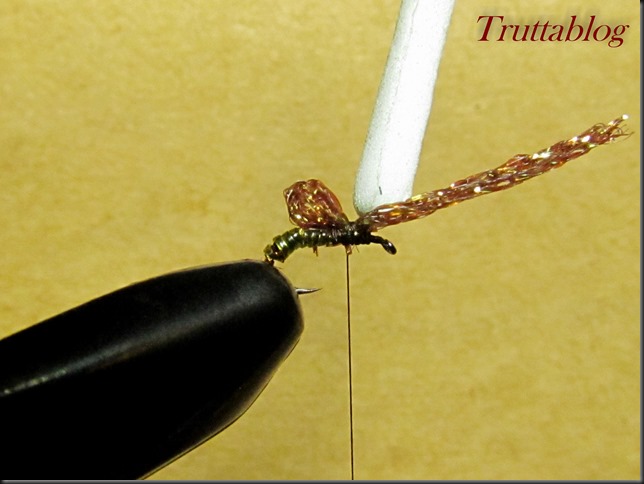
Cut away the body braid, and wrap around the base of the post. You may use a small quantity of UV glue here to help support the base of the post:
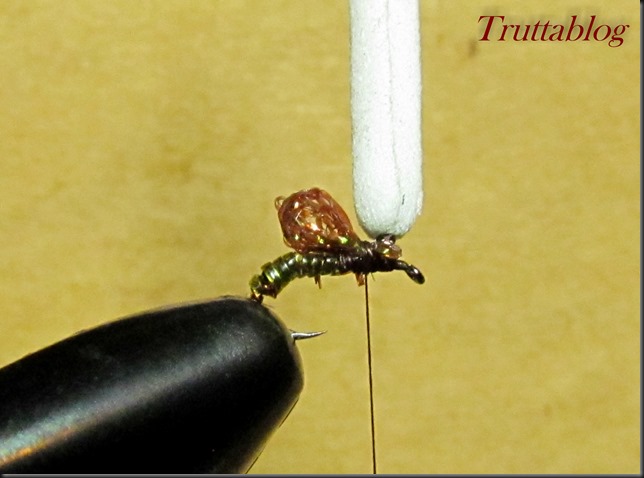
Now tie in two pairs of knotted pheasant tail legs on either side of the shank, angled down towards the hook point: (I will post some tips on how to tie knots in pheasant tail feathers in due course: Keep an eye on Truttablog for that posting)
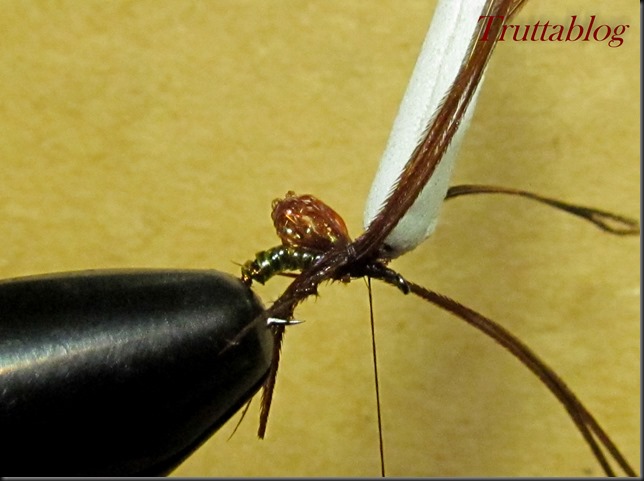
Cut away the excess, and tie in a strand of peacock herl. Then tie in a hackle. I recommend you wrap it to the post, not the shank, as pictured here:
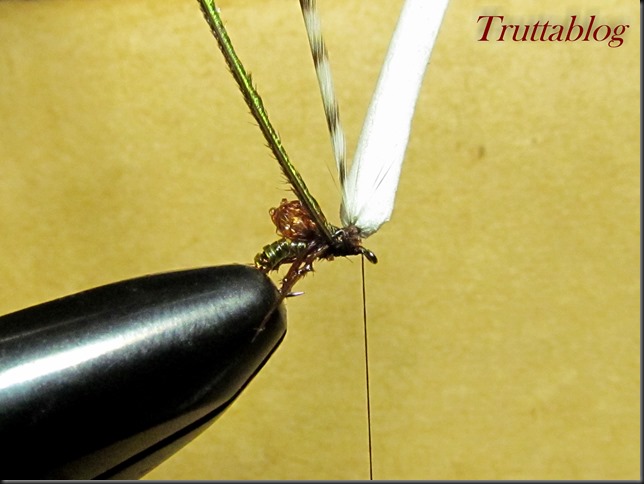
Now tie the peacock herl to form a thorax, and tie off at the eye of the fly. Then return the silk to the post (wrap it around the post):
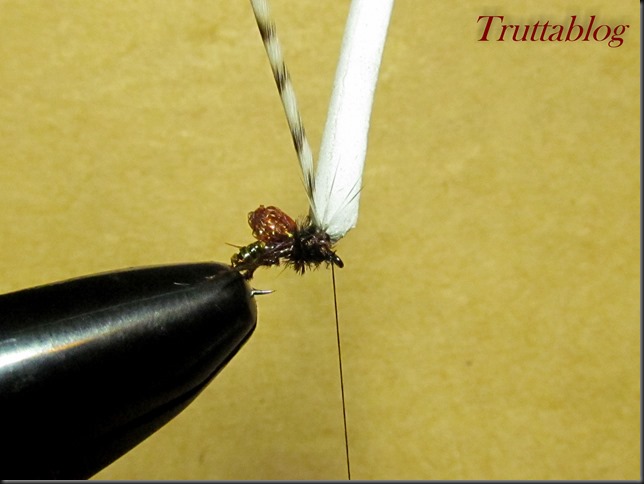
Now wrap the hackle around the post. Start at the top where it is tied in, and make each of four successive wraps, below the last one, coming down the post to the base. After your four turns, tie the hackle onto the post at the base by wrapping the silk around the very base of the post:
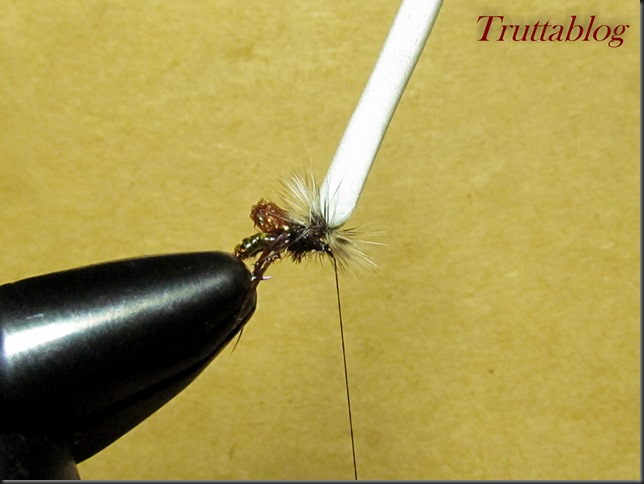
I usually perform a whip finish on the post at this point. An alternative is to return the thread to the shank, and perform a whip finish on the shank, as shown. To do this, you need to squash the entire post and hackle out of the way to expose the shank near the hook eye for the whip finish:
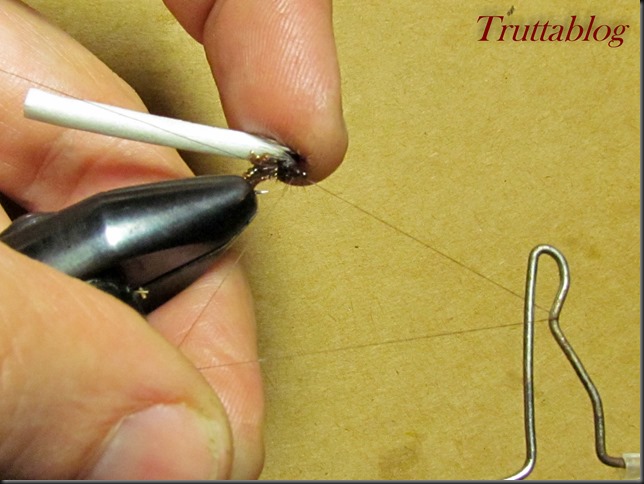
Pull the thread tight after about 5 wraps:
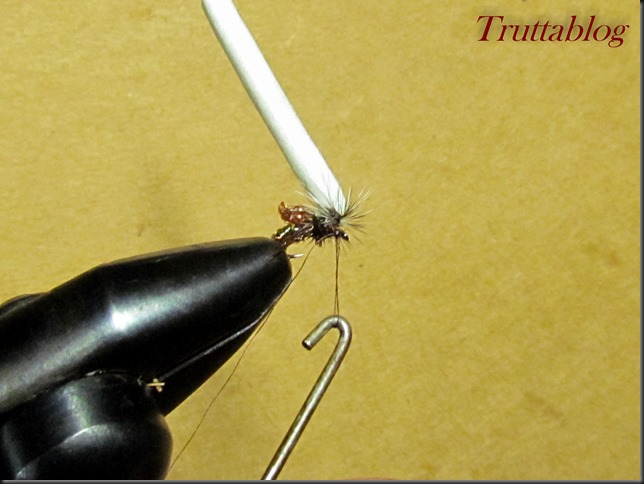
Apply some thin head cement. (This is obtainable from many shops that sell model airplanes. I like it because it comes with a very fine brush, and because it instantly absorbs into materials, locking them in position):
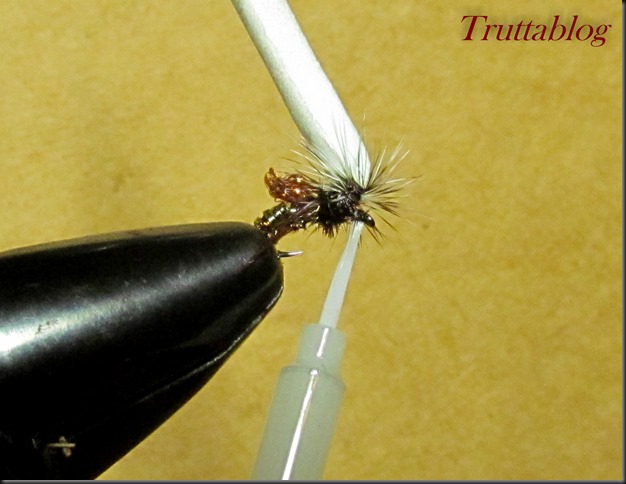
Now trim the top of the post off, and you have the completed fly:
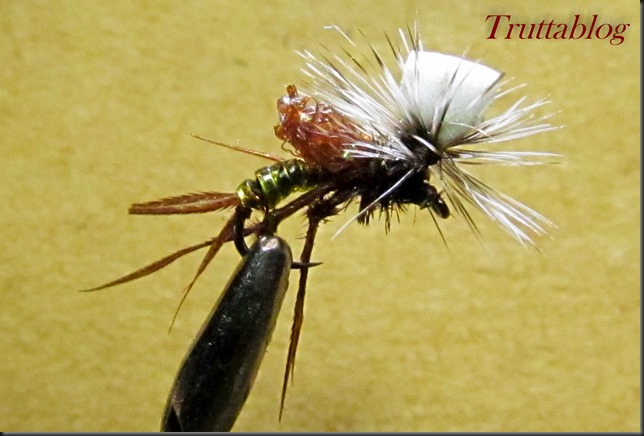
A Top view:
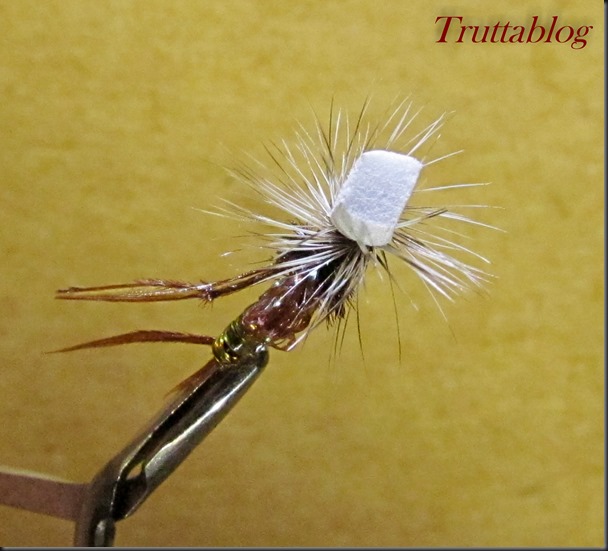
One Response